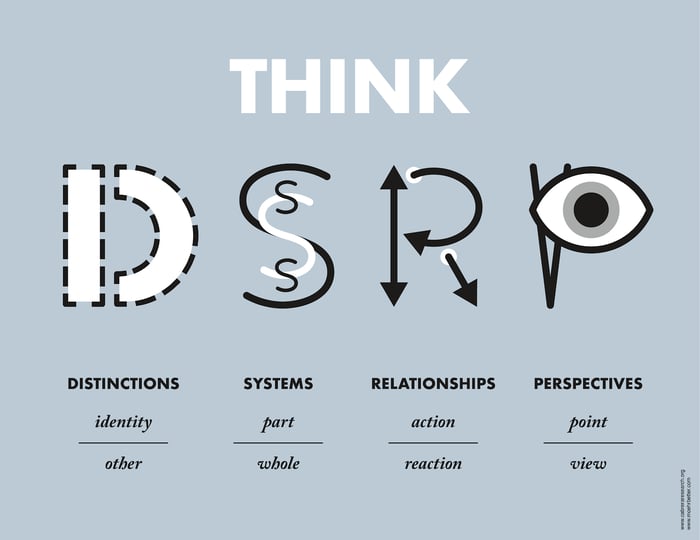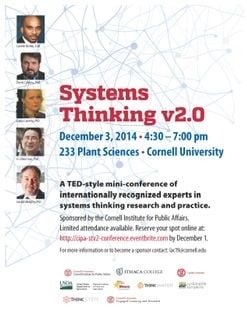You Are A Systems Thinker
 Scott Moehring
·
2 minute read
Scott Moehring
·
2 minute read
“Systems Thinking” sounds like something complicated, technical, and maybe even a little boring. But what if it’s actually a name for something you naturally do all day?
Humans seem unique in that it’s obvious we think about what things are, how they fit together, and how we can interpret them differently. We share our thinking with others. We even think about our thinking!
What are the ways we do this? Here are the four fundamentals of thinking.
1) We can see how everything overlaps with everything else. We just decide where to put the dividing line between “this thing” and “that thing”. This is known as Identity/Other, or a Distinction (D).
2) We can see how everything has smaller parts, and is also part of bigger things. We can take things apart, or combine them with other things. This is known as Part/Whole, or a System (S).
3) We can see how everything connects to anything else. It might be a physical connection, but it could also be conceptual (for example, “seeing the sun lifts my spirits”). This is known as Action/Reaction, or a Relationship (R).
4) We can see how everything can be considered from multiple viewpoints. We can imagine who (or what) is doing the viewing, and what they are looking at. This is known as Point/View, or a Perspective (P).
Since these four fundamentals of thinking might still sound like something disconnected from real life, here’s a little story to help.
You arrive at a deli to have lunch with a friend. As you walk in the door, you glance around. You see lots of people, and you take note of their relationships in space - a couple holding hands, kids huddled with parents, strangers maintaining their personal space. You look for where to order. By doing so, you make distinctions between the eating area and the ordering area, between who is eating and who is in line. You want to be part of the “waiting in line” system, so you join them. You begin looking at the menu board, and start thinking about which parts you want to order. You remember your friend is a vegetarian, and you instantly see the menu from her perspective and notice how that changes the distinctions for what counts as “lunch”. All of this happens automatically without you even realizing it.
Now that you can see that you naturally think this way, why is it important to learn the four fundamentals? Since you are already doing it, now you can start to do it intentionally. When you are faced with a problem, or are curious about something and just want to understand it better, try Thinking On Purpose. Notice the parts and wholes, where the dividing line is placed between things, how the parts connect and affect each other, and what things look like from different perspectives. BONUS: If you teach someone else the four fundamentals, then you can ask them what they are thinking!
Distinctions, Systems, Relationships, and Perspectives - DSRP. I made a little poster as a reminder. Use these four fundamentals, and go think!

.png?width=150&height=150&name=CRL%20GOAT%20Logo%20(4).png)


